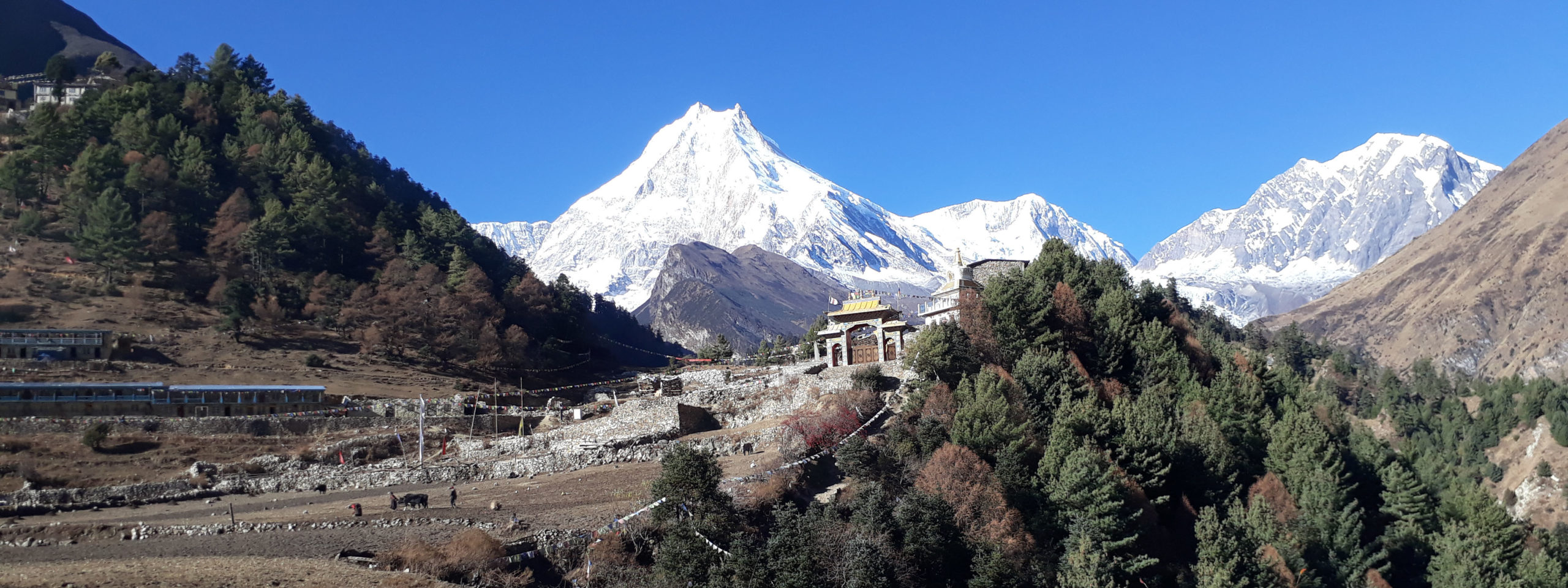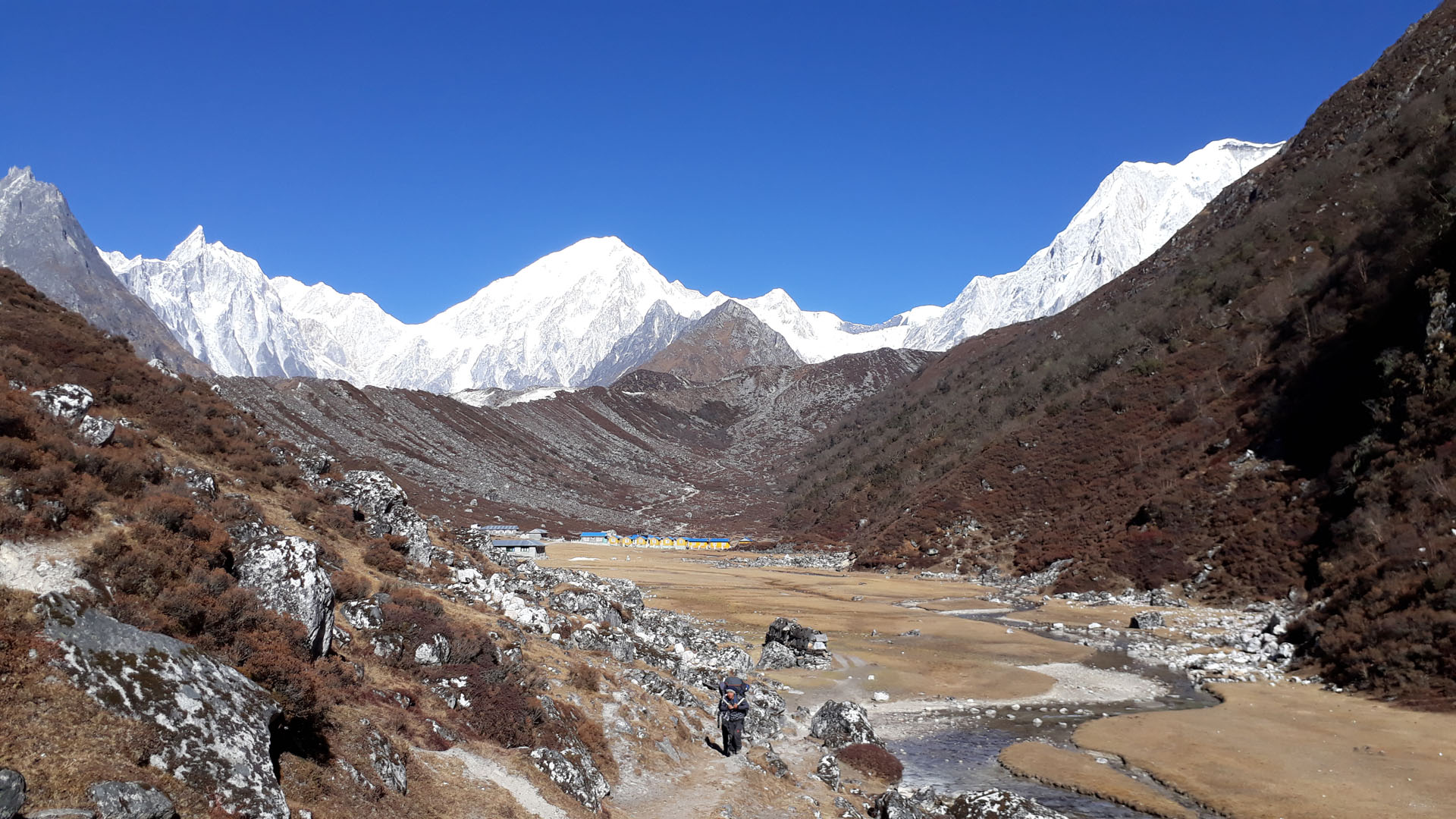
A restricted area trek refers to a trekking experience in a specific region of a country that is subject to special permits and regulations. These areas are often remote, less explore, and have unique cultural or environmental significance.
Restricted area treks provide adventurous travelers with the opportunity to explore off the beaten path locations and immerse themselves in untouched natural beauty and indigenous cultures. These treks require obtaining special permits, traveling with register guides, and adhering to specific guidelines to ensure the preservation of the region and the safety of trekkers.
Nepal is a fantastic destination for trekking enthusiasts, offering a wide range of trekking options, including some restrict areas that require special permits. These special areas provide unique and wilderness path experiences for adventurous travelers. Here are a few popular restricted area treks in Nepal:
Upper Mustang Trek:
Located in the rain shadow region of the Annapurna range, the Upper Mustang region offers a captivating blend of natural beauty and Tibetan culture. Trekking in this area requires a special permit, as it was once a forbidden kingdom, it has a barren valleys, ancient caves, and stunning rock formations.
Manaslu Circuit Trek:
This trek takes you around Mount Manaslu, the eighth highest peak in the world. This trail passes through remote villages, lush forests, glacial valleys, and high mountain passes. A restricted area permit is required for this trek, as it explores the culturally significant Nubry Valley and requires crossing the challenging Larke Pass.
Tsum Valley Trekking in Nepal
Tsum valley is a popular trekking destination in Nepal for several reasons. Firstly, it offers a unique cultural experience. It is a home to the Tsumba people, who have their own distinct language, traditions, and lifestyle. Tsumba culture is deeply rooted in Tibetan Buddhism, and trekkers have the opportunity to visit ancient monasteries, interact with friendly locals, and witness their religious ceremonies.
Secondly, Tsum Valley boasts stunning natural beauty. It takes you through picturesque landscapes, including lush forests, terraced fields, and towering Himalayan peaks. It is nestled between the Ganesh Himal and Sringi Himal ranges, providing breathtaking panoramic views throughout the journey.
Lastly, the recent opening of Tsum Valley for tourism has generated curiosity and interest among trekkers. Until 2008, the region remains restricted and inaccessible to tourists. The sense of exclusivity and the opportunity to explore a relatively unexplored area attract many trekkers to the Tsum Valley.
Nar and Phu Trekking in Nepal
The main reason for the restricted status is to protect the unique culture, traditions, and natural environment of the region. Nar and Phu valleys are home to ethnic Tibetan communities that have preserved their ancient way of life for centuries. This restricted access helps maintain their cultural integrity and prevent the negative impacts of mass tourism.
Furthermore, the area’s proximity to the Tibetan border raises security concerns. Nepal shares a sensitive border with China, and restrictions are in place to ensure the safety and sovereignty of the region.
While the permit requirement status may add some logistical challenges, it also contributes to the allure and exclusivity of the Nar Phu trek, attracting adventure seekers looking for unique path experiences and cultural immersion.
Kanchenjunga Base Camp Trek:
Mount Kanchenjunga is the third highest peak globally and offers a mesmerizing trekking experience in eastern Nepal. This region is less crowds and rich in biodiversity. Kanchanjunga Trekking requires a special permit and takes you through dense forests, terrace fields, remote villages, and stunning alpine landscapes.
Dolpo Trek:
Dolpo, locate in the western part of Nepal, is a remote and culturally distinct region. Trekking in Dolpo takes you through Shey Phoksundo National Park, which is popular for its stunning turquoise lake, Phoksundo. It’s known for its unique Bon culture and Tibetan Buddhist traditions. A restricted area permit is required for Dolpo trek also.
Humla and Simikot Trek:
Humla and Simikot are regions in western Nepal that were previously named as restricted areas for trekking. These areas have recently been unlock for tourism, allowing trekkers to explore their stunning landscapes and unique cultural heritage.
Humla, is in the far northwest of Nepal, is known for its remote and rough terrain. It is home to the Limi Valley, which offers breathtaking views of snow-capped mountains, pristine lakes, and traditional Tibetan villages. This region showcases a blend of Tibetan and Nepali cultures, with monasteries, ancient caves, and traditional practices adding to its charm.
Simikot to Hilsa trek:
It’s an adventurous and remote trekking route in western Nepal, near the border with Tibet (China). It is part of the Great Himalayan Trail and offers a unique opportunity to explore the pristine landscapes and cultural treasures of the region.
Hike to Hilsa starts from Simikot, the administrative headquarters of Humla District, and follows a challenging trail through rugged terrain, deep river valleys, and high mountain passes. One of the highlights of this trek is crossing the Nara La Pass at an altitude of around 4,620 meters, which offers panoramic views of the surrounding peaks and valleys.
Journey to Hilsa from Simikot also takes you along the divine Karnali River, and you may encounter nomadic herders and remote communities along the way. Additionally, trekkers traverse through picturesque villages, terraced fields, dense forests, and barren landscapes, experiencing the diverse beauty of the area.
It’s important to note that restricted area treks often have additional requirements, such as traveling with a registered guide and a minimum group size. These measures are in place to ensure the safety and preservation of the region.
Before embarking on any control area trek, it is advisable to gather up-to-date information and consult with a local trekking agency or the Department of Immigration in Nepal to understand the permit requirements, regulations, and current trekking conditions.

Reasons to keep some places as a Restricted Area in Nepal
The Nepal Government designates certain areas as restriction for trekking due to various reasons. Here are a few common reasons behind the decision:
Preservation of culture and heritage:
Protect areas often have unique cultural significance and are home to indigenous communities with distinct traditions and lifestyles. Nepal’s Government protects and preserves cultural heritage limiting access and ensuring that the local way of life remains peaceful.
Environmental conservation:
Some areas encompass fragile ecosystems, rare flora and fauna, or sensitive ecological zones. Through restricting access, the government minimizes human impact and maintains the pristine condition of these areas, promoting sustainable tourism and conservation efforts.
Security concerns:
In certain border regions or areas with political sensitivity, restricting access helps maintain national security and sovereignty. It ensures that unauthorize individuals or activities do not compromise the safety and integrity of the region.
Promoting control tourism:
As designing the control area, the government controls tourist flow and prevents overcrowding. This approach protects the natural environment, manages infrastructure and resources, and provides a higher quality experience for trekkers.
How to get a restrict area permit in Nepal?
Anyone willing to enter to the restricted area in Nepal, go through legal agency like a Gokyo Treks and Expedition. You must get a restrict area trek permit through the department of the immigration office in Nepal. In addition, you also needs the national park and conservation office permit which you get either from the Nepal Tourism Board or through the Gokyo trek company.
Every trekker must have those permits before you go otherwise a double value of permit cost will be charged as a penalty. If you do not want to bother about the special permits and arrangements for the trip, we help you all.
We arranges the online trekking permit through a series of applications and guarantee letters. You cannot trek alone, Thus, you need a minimum of 2 foreigners to apply for trek permits together. We need a valid passport with a valid visa to get permits.
In remote areas, there are no lodges along the journey. Therefore, Gokyo Treks & Expedition, a trekking agency in Nepal, provides everything you need, including tents, support staff, mattresses, pillows, food, and cooks. Treks in controlled areas are costlier due to the need for additional crew and supplies from town.
